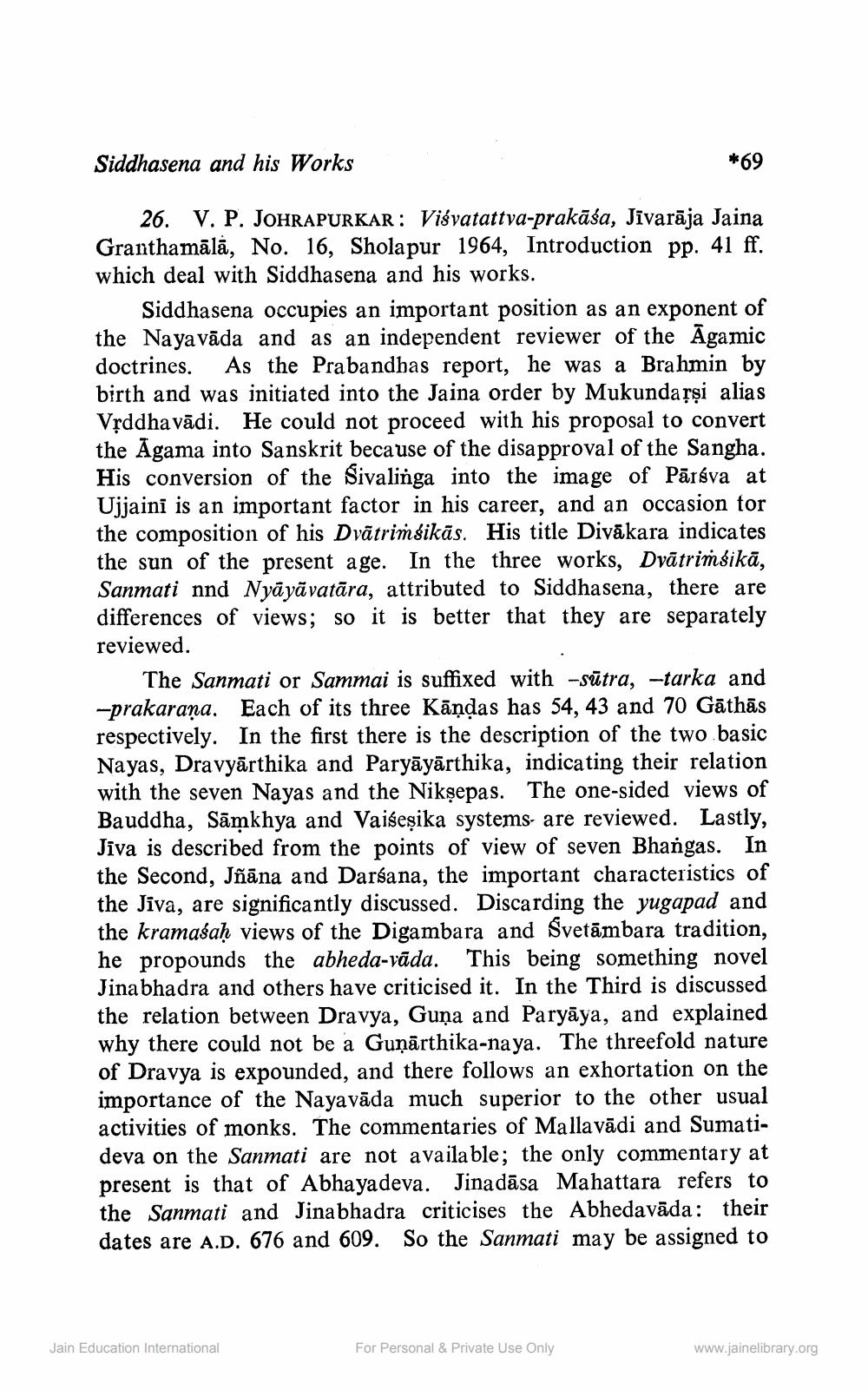________________
Siddhasena and his Works
*69
26. V. P. JOHRAPURKAR: Visvatattva-prakāśa, Jīvarāja Jaina Granthamālā, No. 16, Sholapur 1964, Introduction pp. 41 ff. which deal with Siddhasena and his works.
Siddhasena occupies an important position as an exponent of the Nayavāda and as an independent reviewer of the Āgamic doctrines. As the Prabandhas report, he was a Brahmin by birth and was initiated into the Jaina order by Mukundarşi alias Vțddha vādi. He could not proceed with his proposal to convert the Agama into Sanskrit because of the disapproval of the Sangha. His conversion of the Sivalinga into the image of Pārsva at Ujjaini is an important factor in his career, and an occasion for the composition of his Dvātrimsikās. His title Divākara indicates the sun of the present age. In the three works, Dvātrimśikā, Sanmati nnd Nyāyāvatāra, attributed to Siddhasena, there are differences of views; so it is better that they are separately reviewed.
The Sanmati or Sammai is suffixed with -Sūtra, -tarka and -prakaraña. Each of its three Kāņdas has 54, 43 and 70 Gāthās respectively. In the first there is the description of the two basic Nayas, Dravyārthika and Paryāyārthika, indicating their relation with the seven Nayas and the Nikşepas. The one-sided views of Bauddha, Sāmkhya and Vaiseșika systems are reviewed. Lastly, Jiva is described from the points of view of seven Bhangas. In the Second, Jñāna and Darsana, the important characteristics of the Jiva, are significantly discussed. Discarding the yugapad and the kramaśaḥ views of the Digambara and Svetāmbara tradition, he propounds the abheda-vāda. This being something novel Jina bhadra and others have criticised it. In the Third is discussed the relation between Dravya, Guņa and Paryāya, and explained why there could not be a Guņārthika-naya. The threefold nature of Dravya is expounded, and there follows an exhortation on the importance of the Nayavāda much superior to the other usual activities of monks. The commentaries of Mallavādi and Sumatideva on the Sanmati are not available; the only commentary at present is that of Abhayadeva. Jinadāsa Mahattara refers to the Sanmati and Jina bhadra criticises the Abhedavāda: their dates are A.D. 676 and 609. So the Sanmati may be assigned to
Jain Education International
For Personal & Private Use Only
www.jainelibrary.org




